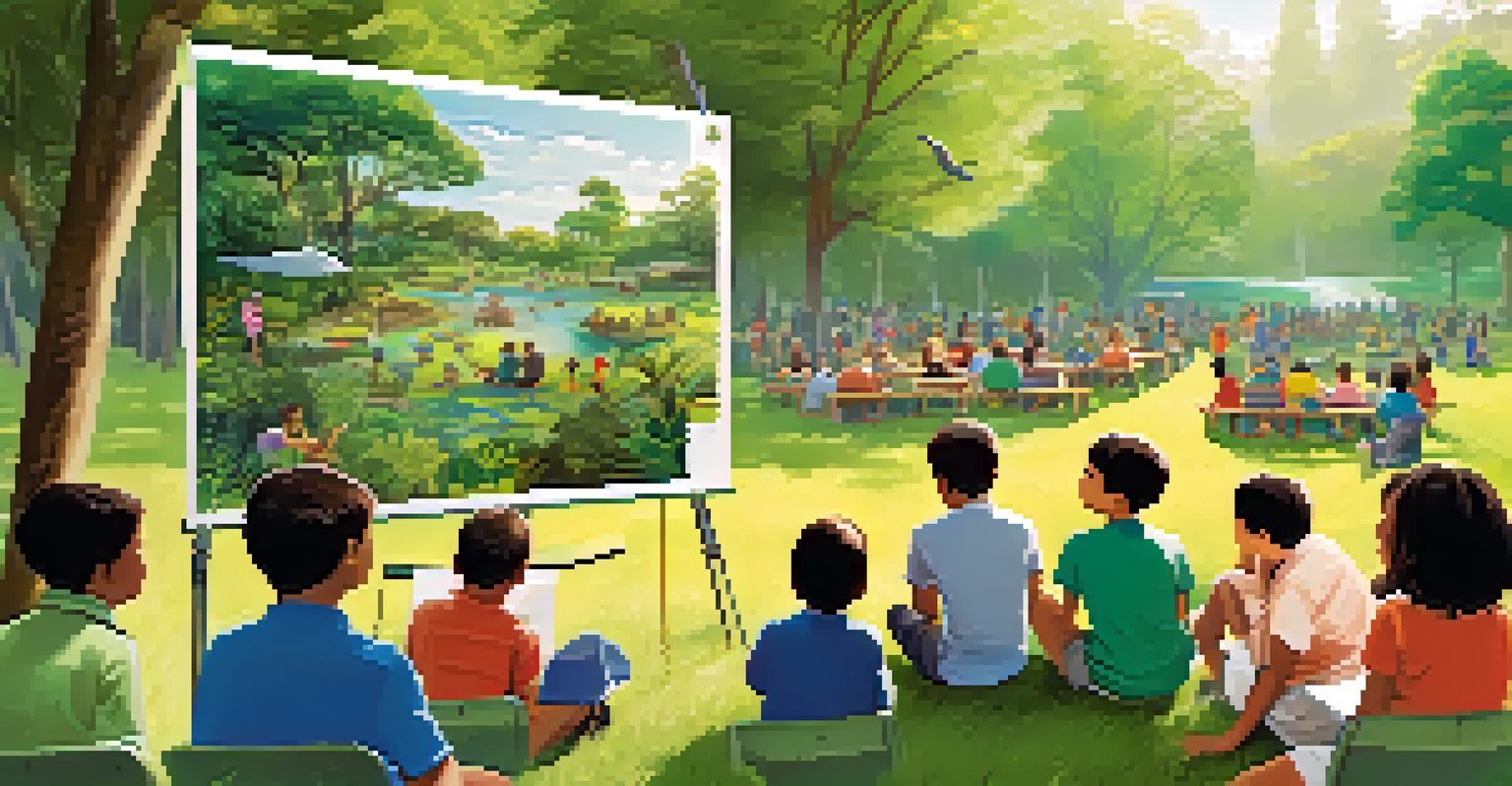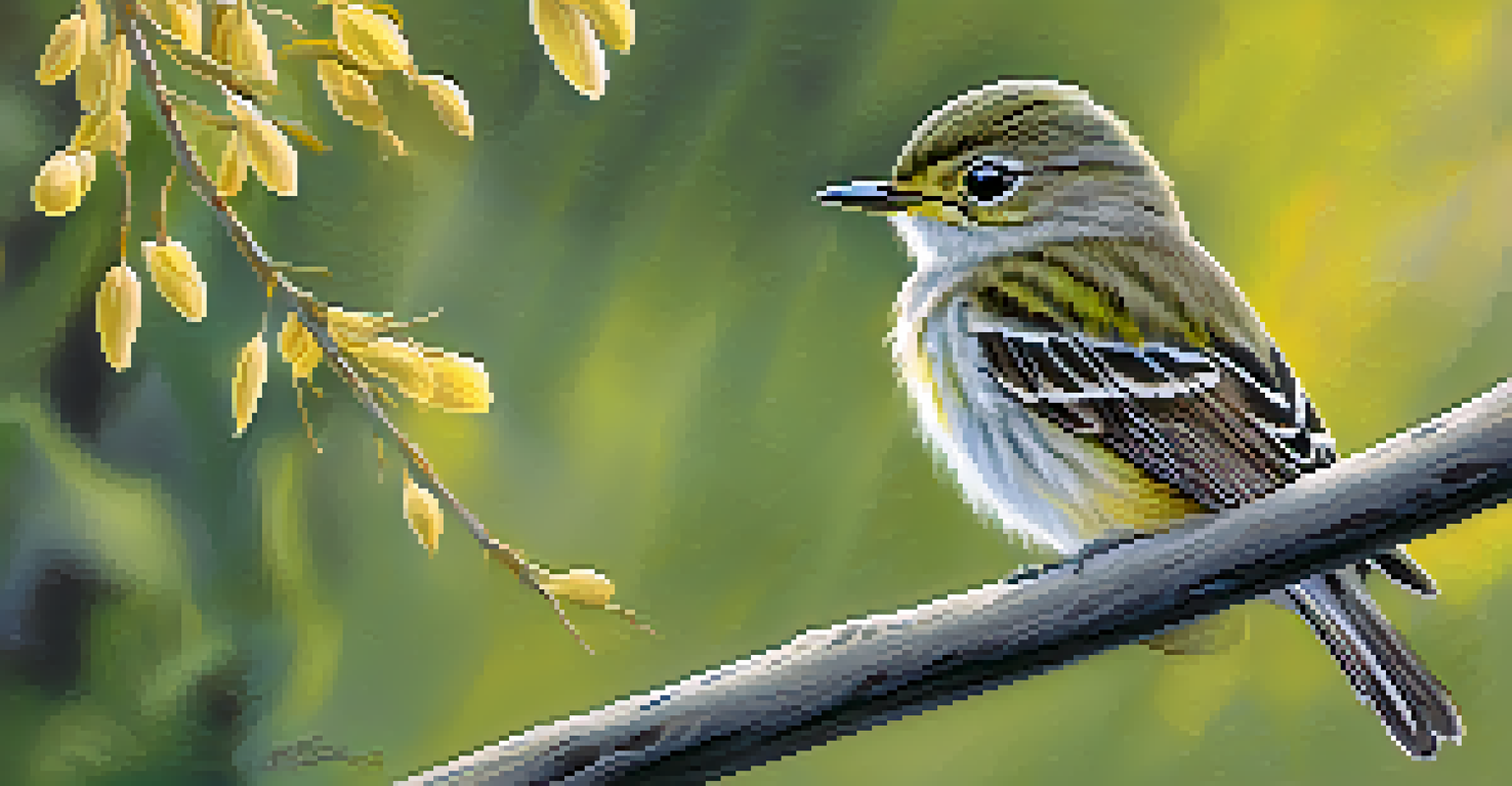Scottsdale's Endangered Species: Protecting Our Vulnerable Fauna

Understanding Endangered Species in Scottsdale
Endangered species are those animals and plants at risk of extinction. In Scottsdale, these vulnerable creatures play crucial roles in our ecosystem. Recognizing their plight is the first step toward effective conservation efforts.
The greatest threat to our planet is the belief that someone else will save it.
Several factors contribute to the endangerment of species, including habitat loss, pollution, and climate change. For instance, the desert tortoise, a hallmark of Arizona's wildlife, faces threats due to urban expansion. Understanding these challenges helps us appreciate the urgency of protecting these species.
By raising awareness about endangered species, we empower ourselves and our community to take action. From school programs to local initiatives, education is key to fostering a culture of conservation in Scottsdale.
Key Endangered Species in the Scottsdale Area
In the Scottsdale region, several species are on the brink of extinction. The Sonoran Desert tortoise and the southwestern willow flycatcher are just two examples that highlight the area's biodiversity. Each of these species contributes uniquely to the local ecosystem.

The desert tortoise, for example, plays a vital role in maintaining the health of the desert habitat. As it burrows, it creates shelters for other animals, demonstrating how interconnected life can be. Similarly, the southwestern willow flycatcher relies on specific riparian habitat, which is increasingly rare due to development.
Endangered Species in Scottsdale
Scottsdale is home to several endangered species, such as the desert tortoise and southwestern willow flycatcher, highlighting the region's biodiversity.
By focusing on these key species, we can better understand the broader environmental issues at play. Protecting these animals often means preserving their habitats, which benefits countless other species and the environment as a whole.
The Role of Local Organizations in Conservation
Local organizations have a significant role in the conservation of endangered species in Scottsdale. Groups like the Arizona Game and Fish Department and various wildlife conservation nonprofits work tirelessly to monitor populations and protect habitats. Their efforts often involve community engagement and education.
In every walk with nature one receives far more than he seeks.
These organizations also conduct research to gather data on local wildlife, helping to inform conservation strategies. For example, they may track the movement patterns of animals to understand their needs better. Such research is crucial for making informed decisions about habitat protection and restoration.
Community involvement is essential for the success of these organizations. Volunteers often participate in local clean-ups, habitat restoration projects, and educational programs that inspire others to care about wildlife conservation.
Legislation Protecting Endangered Species
Legislation plays a vital role in the protection of endangered species in Scottsdale and beyond. The Endangered Species Act, enacted in 1973, aims to protect and recover imperiled species and their habitats. This law provides a framework for conservation efforts on both federal and state levels.
In Scottsdale, local laws complement federal protections, addressing specific regional challenges. For instance, zoning regulations may limit urban development in critical habitats, ensuring that vulnerable species have a chance to thrive. These legal protections are essential for maintaining biodiversity.
Community Drives Conservation Efforts
Local organizations and community involvement are crucial for effective conservation strategies and habitat preservation in Scottsdale.
However, legislation alone isn’t enough. Public support and involvement are crucial to ensure that these laws are enforced and that communities prioritize conservation efforts. As residents, we can advocate for policies that protect our local wildlife.
Community Involvement in Wildlife Conservation
Community involvement is a powerful tool for wildlife conservation in Scottsdale. Local residents can participate in various initiatives, from habitat restoration to wildlife monitoring programs. Engaging the community fosters a sense of shared responsibility for protecting endangered species.
For example, citizen science projects allow individuals to contribute data on local wildlife sightings. This information is invaluable for researchers working to track populations and understand their needs. When people feel connected to their local wildlife, they are more likely to support conservation efforts.
Moreover, community events focused on wildlife education can inspire others to join the cause. Workshops, nature walks, and school programs can raise awareness about endangered species and motivate collective action.
The Importance of Habitat Preservation
Habitat preservation is critical for the survival of endangered species in Scottsdale. Protecting the natural environments where these animals live ensures they have the resources they need to thrive. Without suitable habitats, even the most resilient species can struggle to survive.
In Scottsdale, this means safeguarding desert landscapes, riparian zones, and other vital ecosystems. Efforts to restore and protect these areas can lead to a healthier environment for both wildlife and humans. For example, re-establishing native plants can enhance biodiversity and provide food and shelter for various species.
Legislation Supports Wildlife Protection
The Endangered Species Act and local regulations play a vital role in protecting endangered species and their habitats in Scottsdale.
Preserving habitats also benefits the community by maintaining the beauty and ecological integrity of the area. When we invest in our environment, we create a sustainable future that supports both wildlife and human populations.
How You Can Help Endangered Species in Scottsdale
There are many ways individuals can contribute to the protection of endangered species in Scottsdale. Simple actions, such as reducing water usage and avoiding plastic pollution, can have a significant impact on local wildlife. Every small effort counts towards a more sustainable environment.
Additionally, supporting local conservation organizations through donations or volunteer work can further bolster these efforts. Many groups rely on community support to fund essential programs and initiatives. Your involvement can help make a real difference in the lives of endangered species.

Finally, spreading awareness among friends and family can amplify the message of conservation. By discussing the importance of protecting our local fauna, you can inspire others to take action and foster a community dedicated to wildlife preservation.